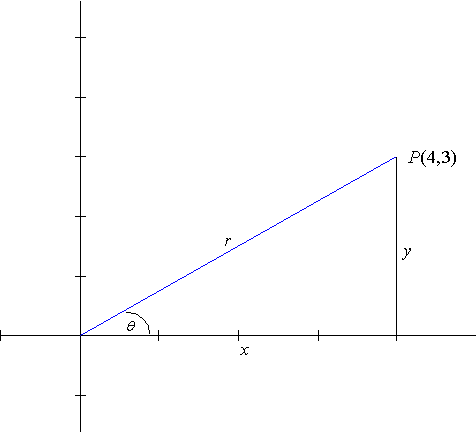|
|
|
|
|
|||||||
|
|
|||||||||||

UNIT 6 : BASIC TRIGONOMETRY WITH TRIANGLES
LESSON
6: UNIT SUMMARY
Pythagorean
Theorem:
In any
right triangle, the square on the hypotenuse [c] equals the sum of the squares
on the other two sides [a,b].


a c
b
Primary
Trigonometric Ratios :
![]()





Example : Right Triangles – Two Triangle Questions.
Find DG
to the nearest tenth in the diagram below.

 D
D
![]()
![]()
![]() 54.2o 31.6o
54.2o 31.6o
E G
9.7 cm F

Angles
in Standard Position:
Definition: An angle is in standard
position if it has its
vertex at the origin and initial arm
along the positive x-axis. The terminal
arm is found by rotating the initial arm about the origin to a terminal
position in one of the 4 quadrants. The
rotation is positive if it is in the counter – clockwise direction and negative
if in the clockwise direction.


![]()

Example :
![]()
Solution:
x = 4 y = 3 r = 5 


![]()
Example : Angles greater than 900
![]()
Solution:


x = -5 y = 12 r = 13

Note that sine is positive and cosine and tangent are negative for a second quadrant angle.
Result: To find the trigonometric ratios of angles between 90o
and 180o, use the following rules:

The
Sine Law:
The sine
law is used to solve oblique triangles, that is triangles which are not right angled.
A


![]() c b
c b
![]() B a C
B a C



![]()

 C
C
9.6 h 9.6
12.4
![]()
![]() A1 420 B
A1 420 B
A2
The
Cosine Law:
The
cosine law is also used to solve oblique triangles, that is triangles which are not right angled.
It is
used in the following two situations.
1. Given two sides and a contained angle
(SAS), use one of the following 3
formulas to find the third side.

2. Given
three sides (SSS), use one of
the following 3 formulas to find an angle.




